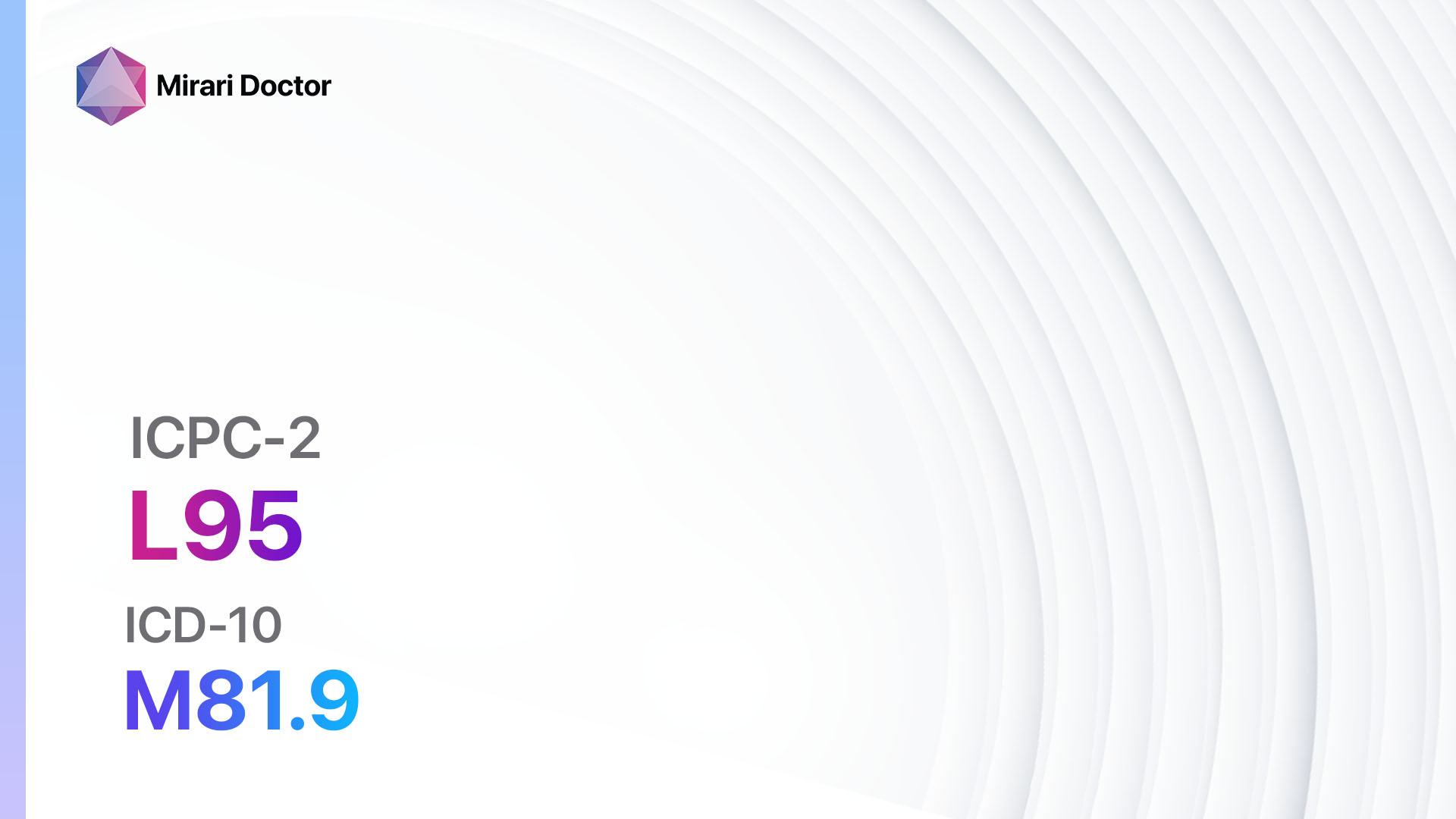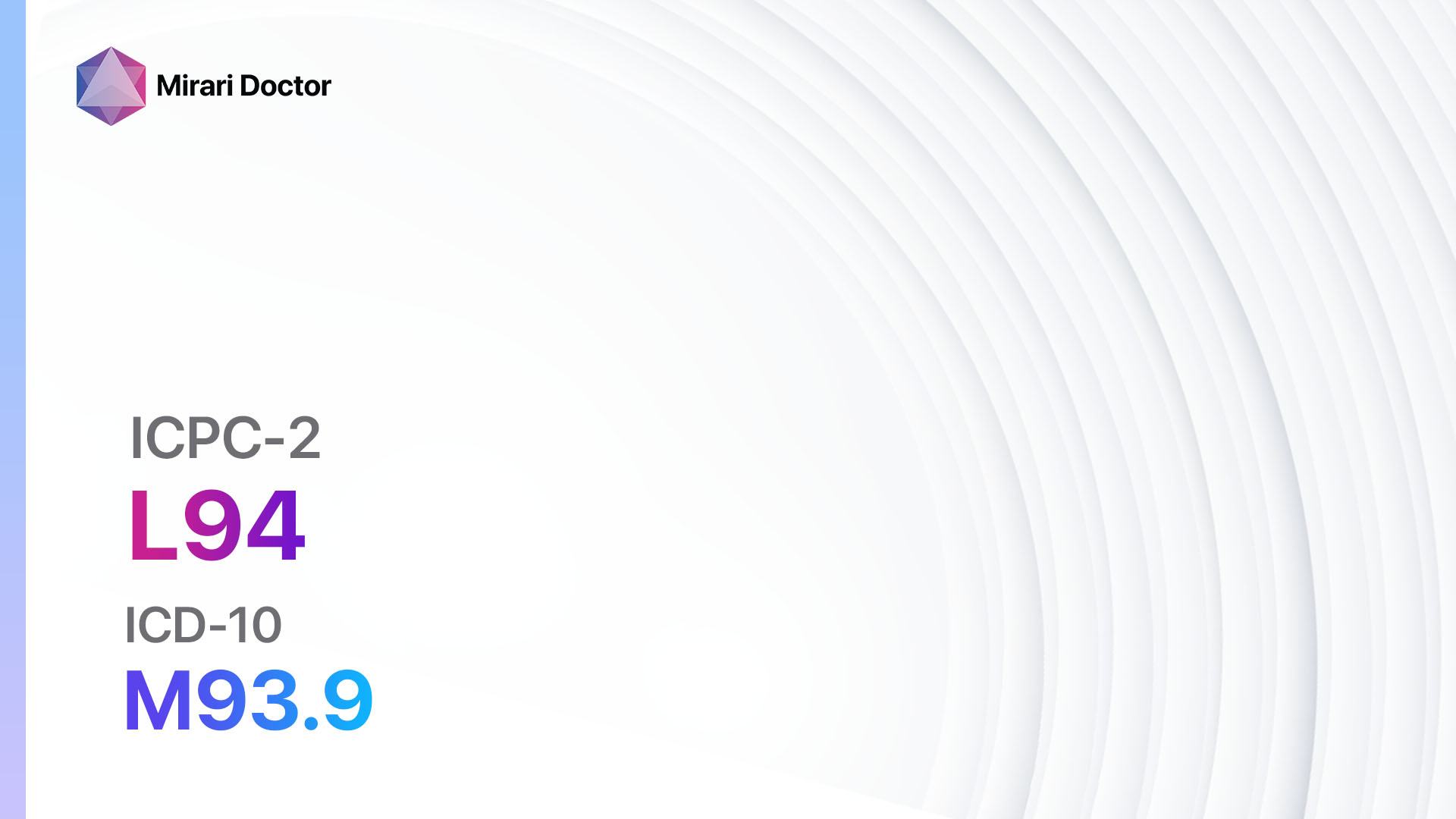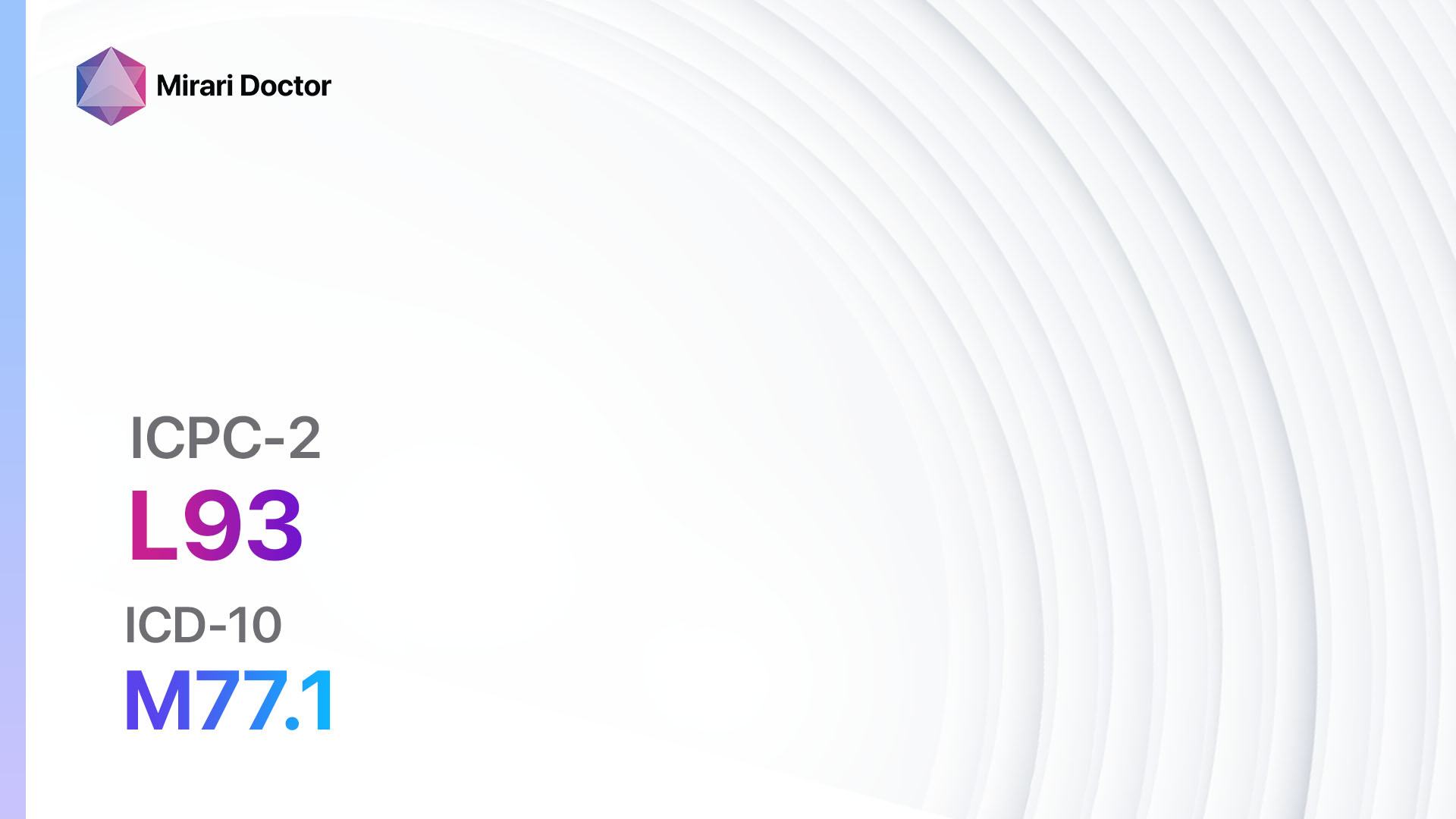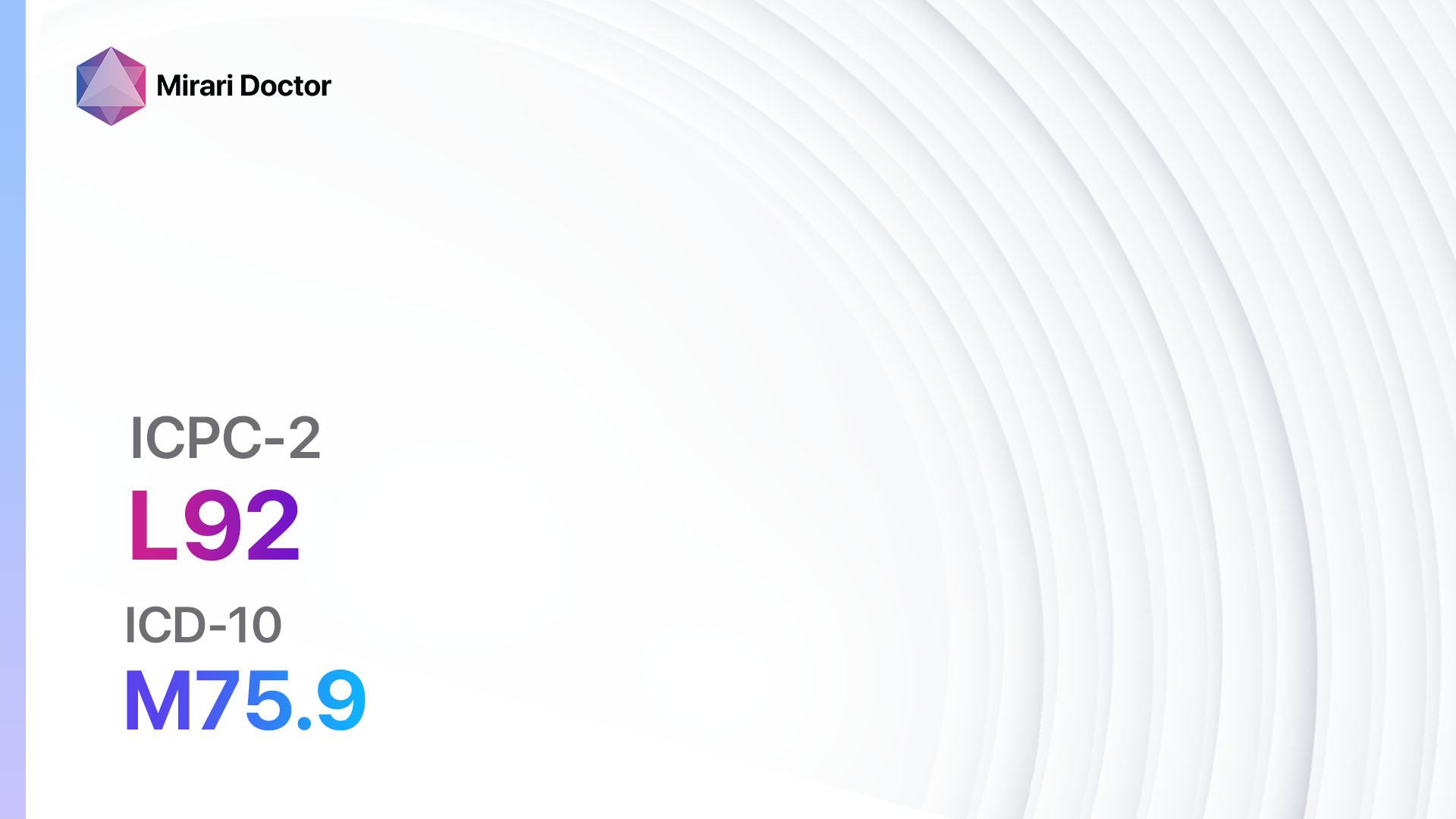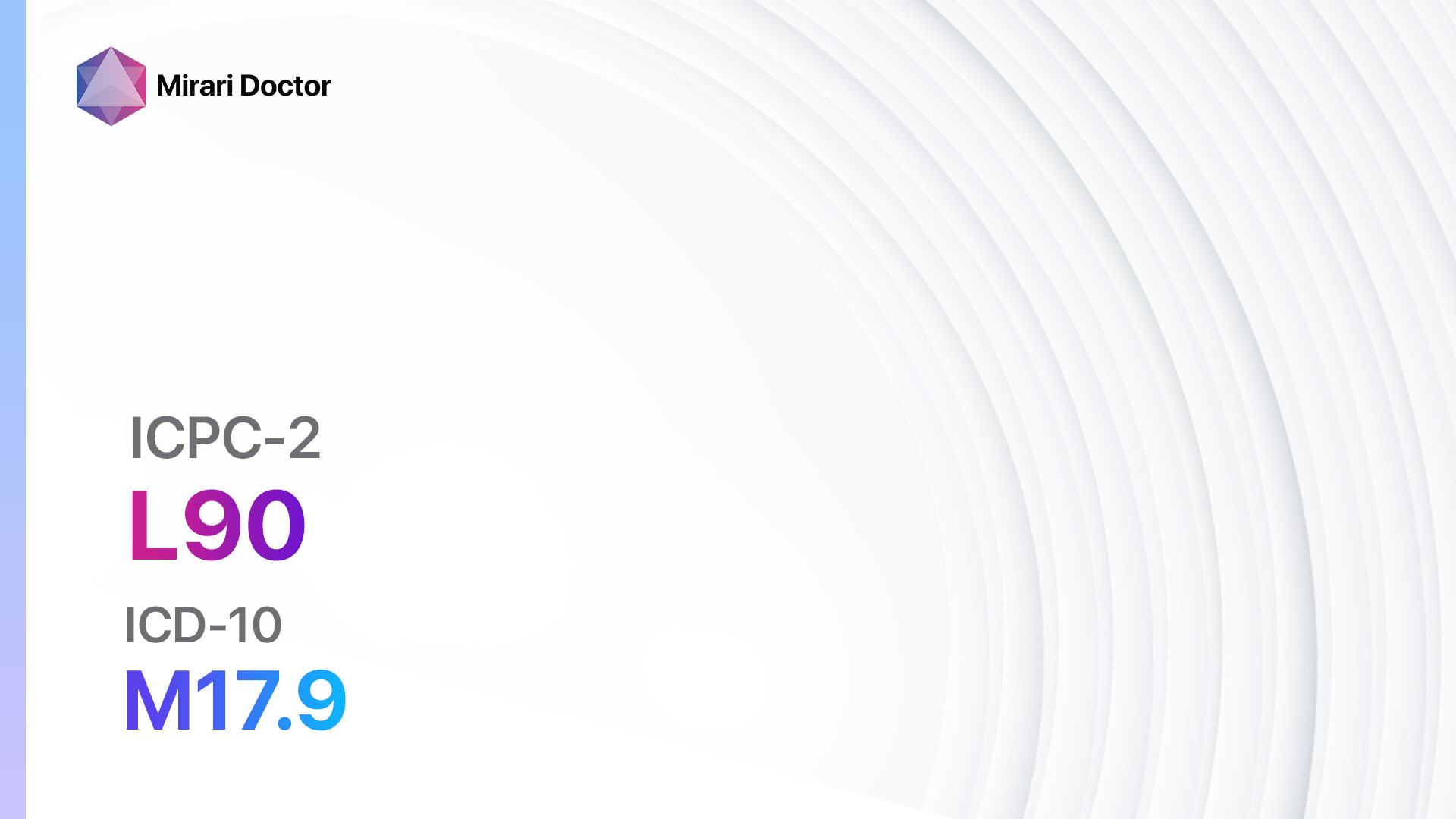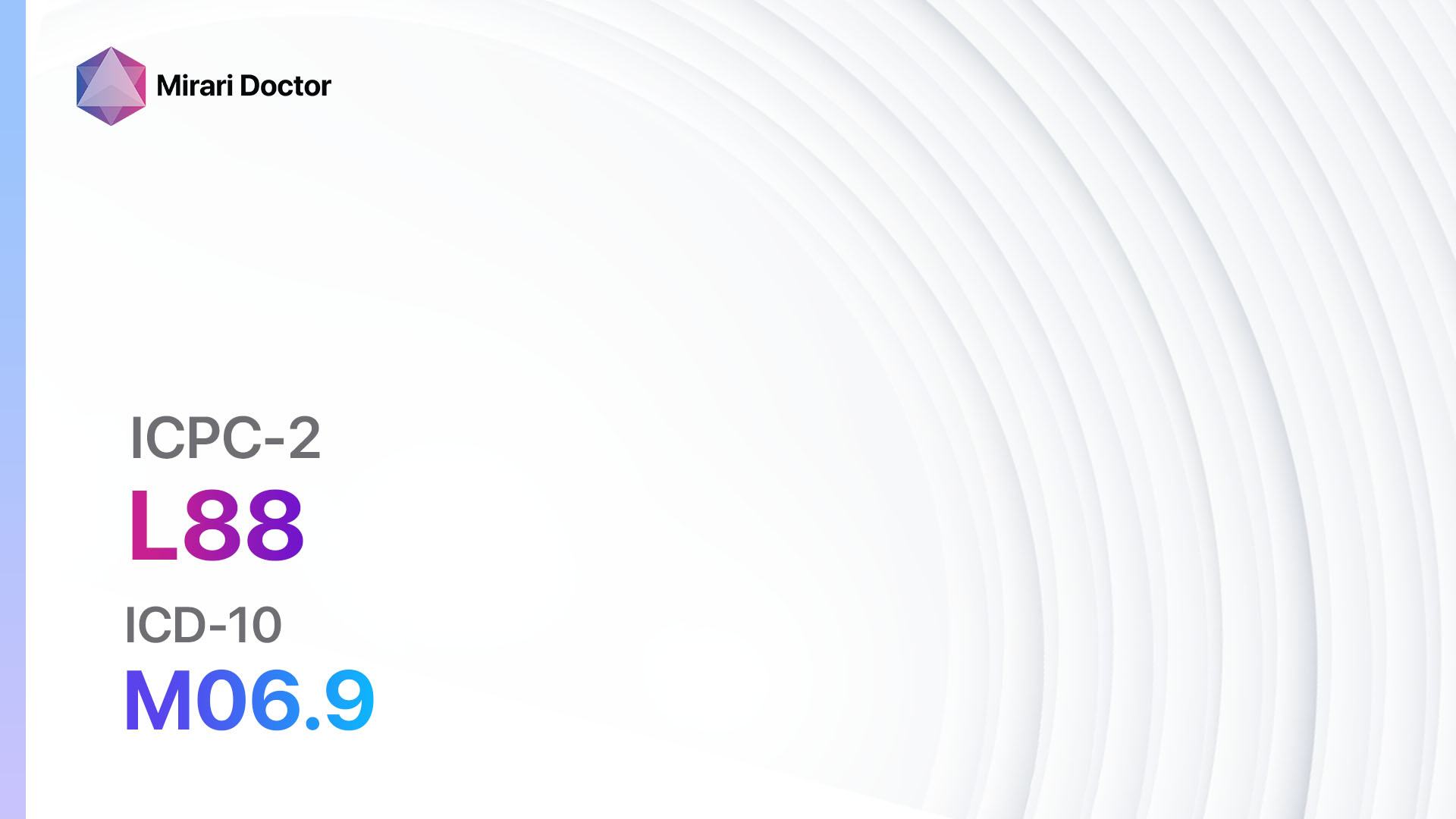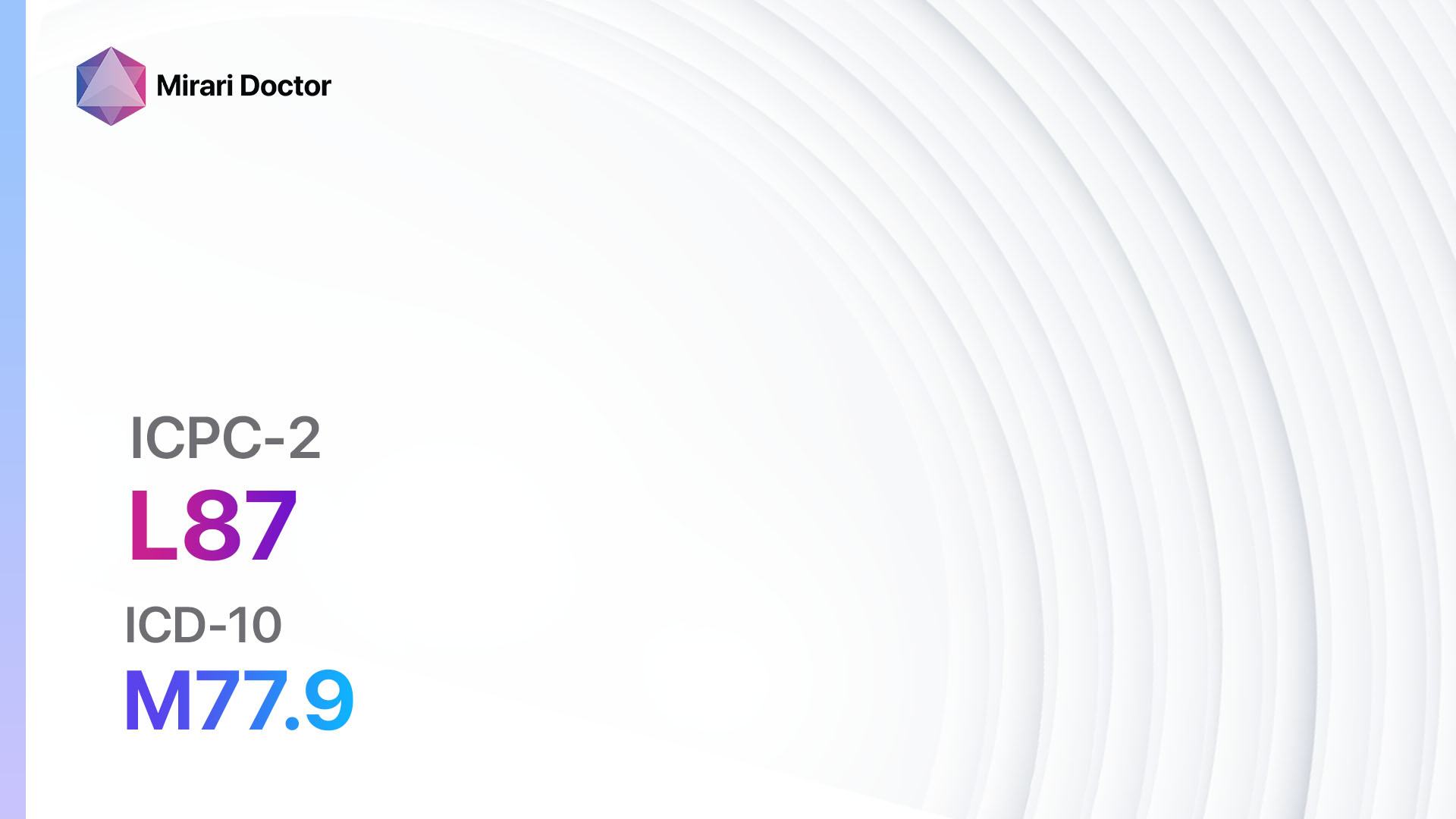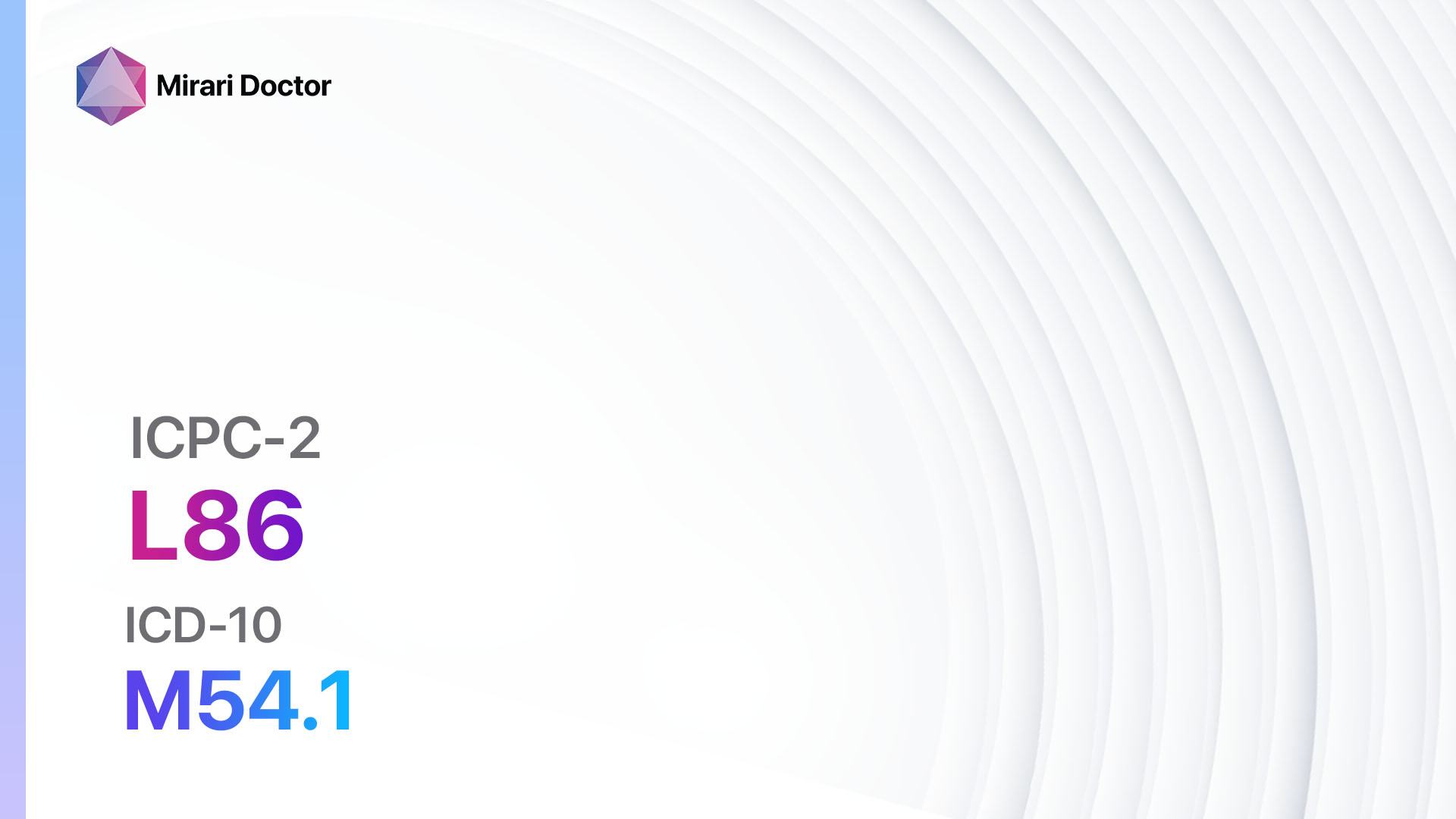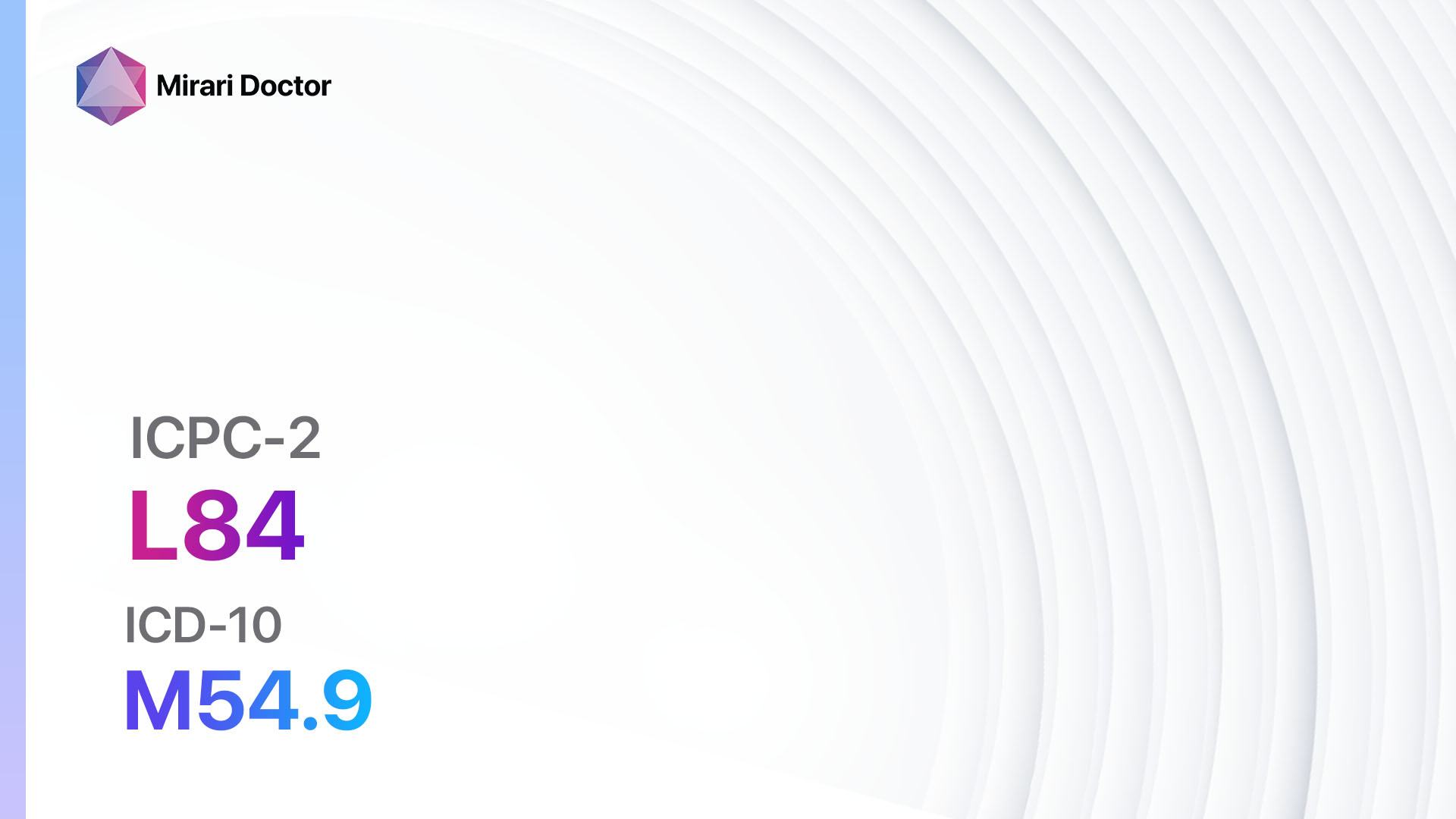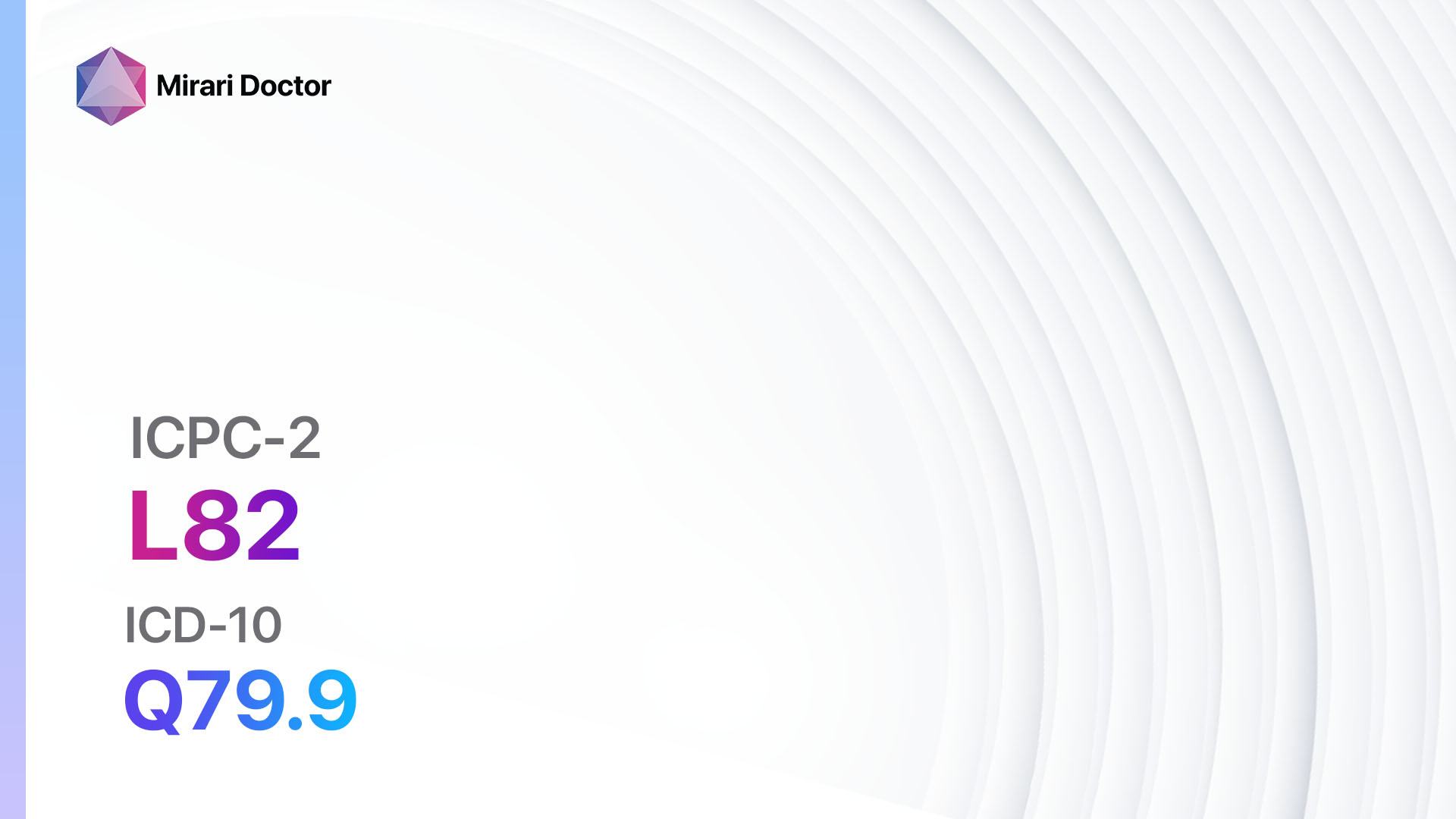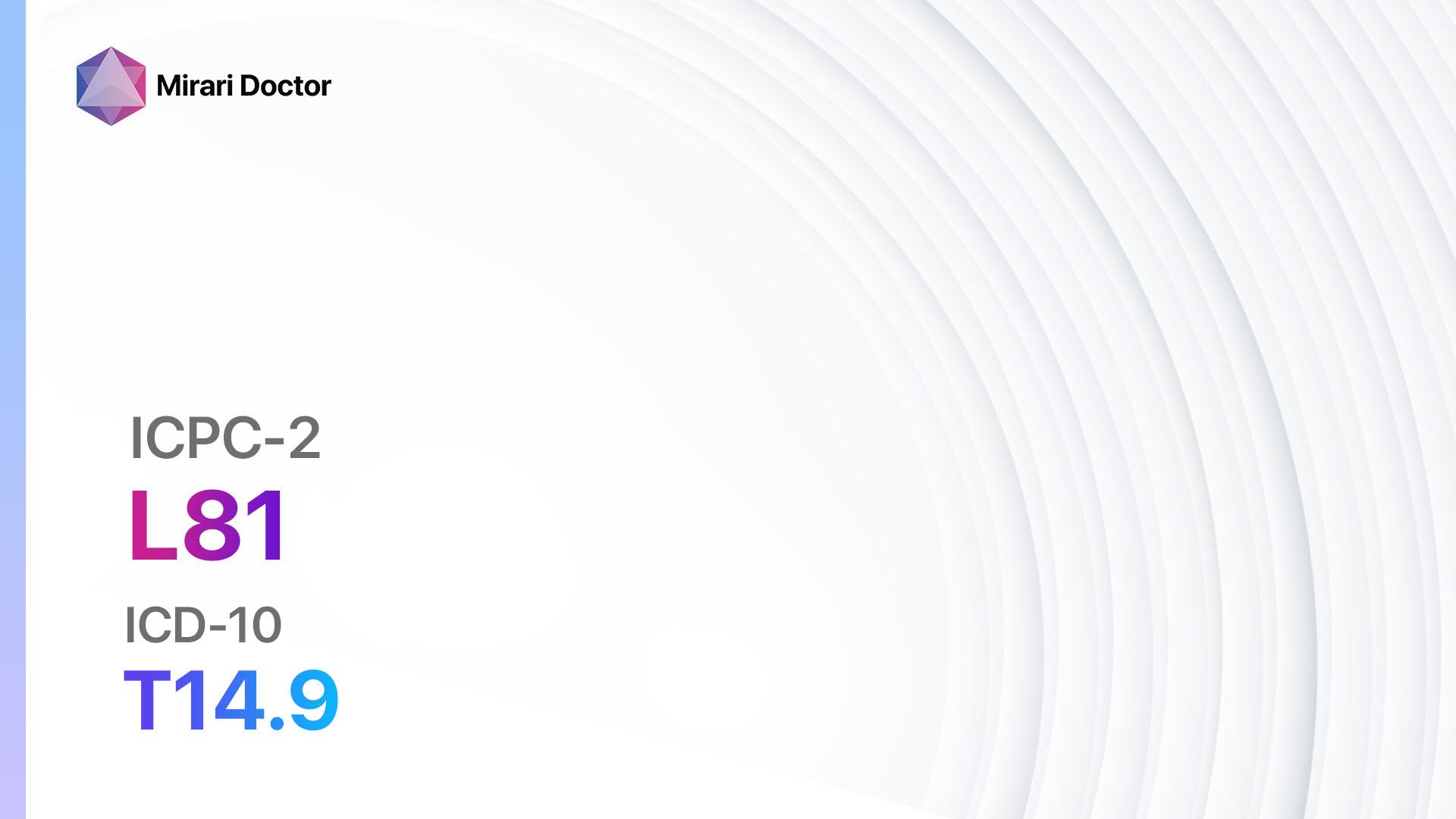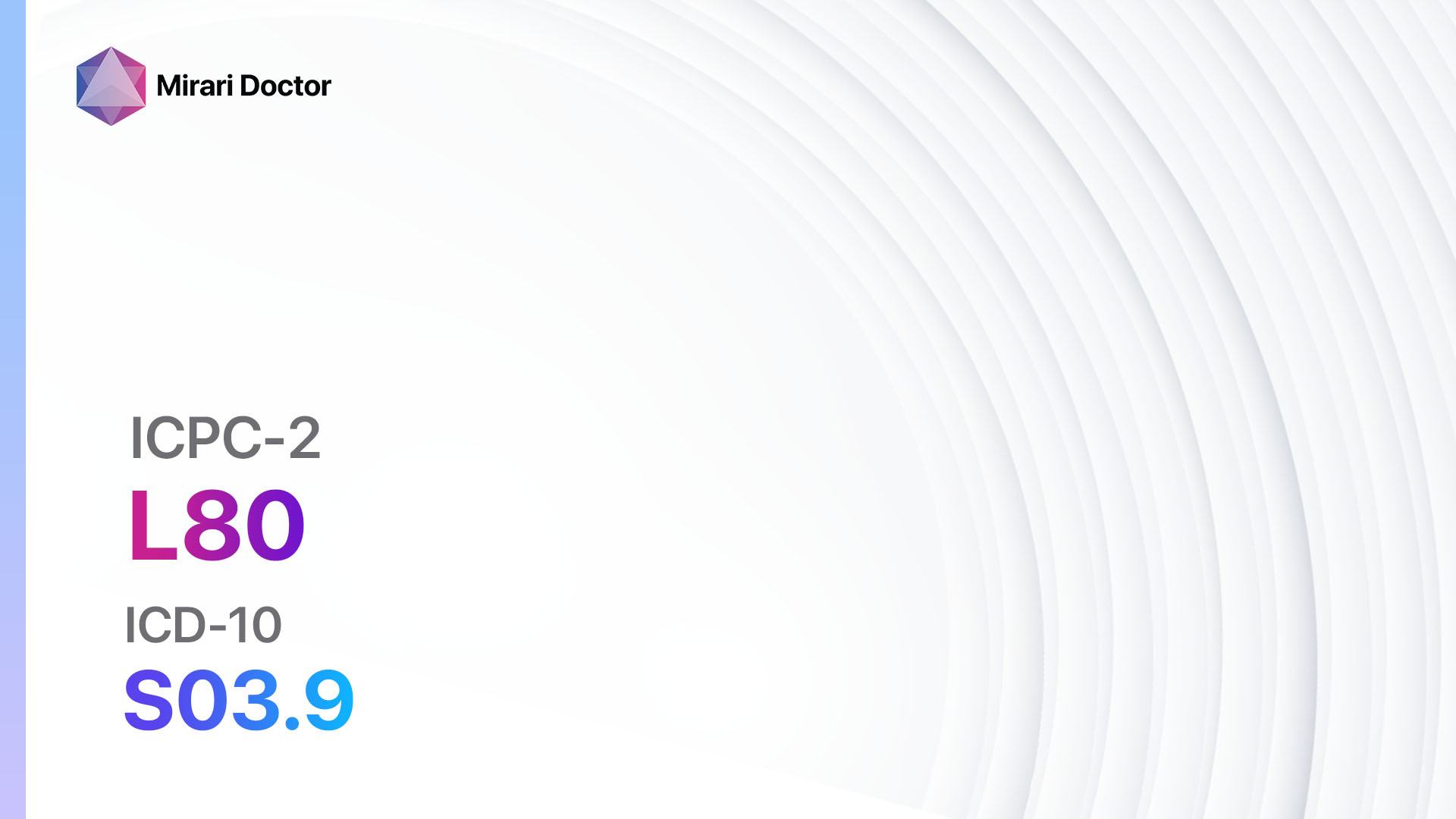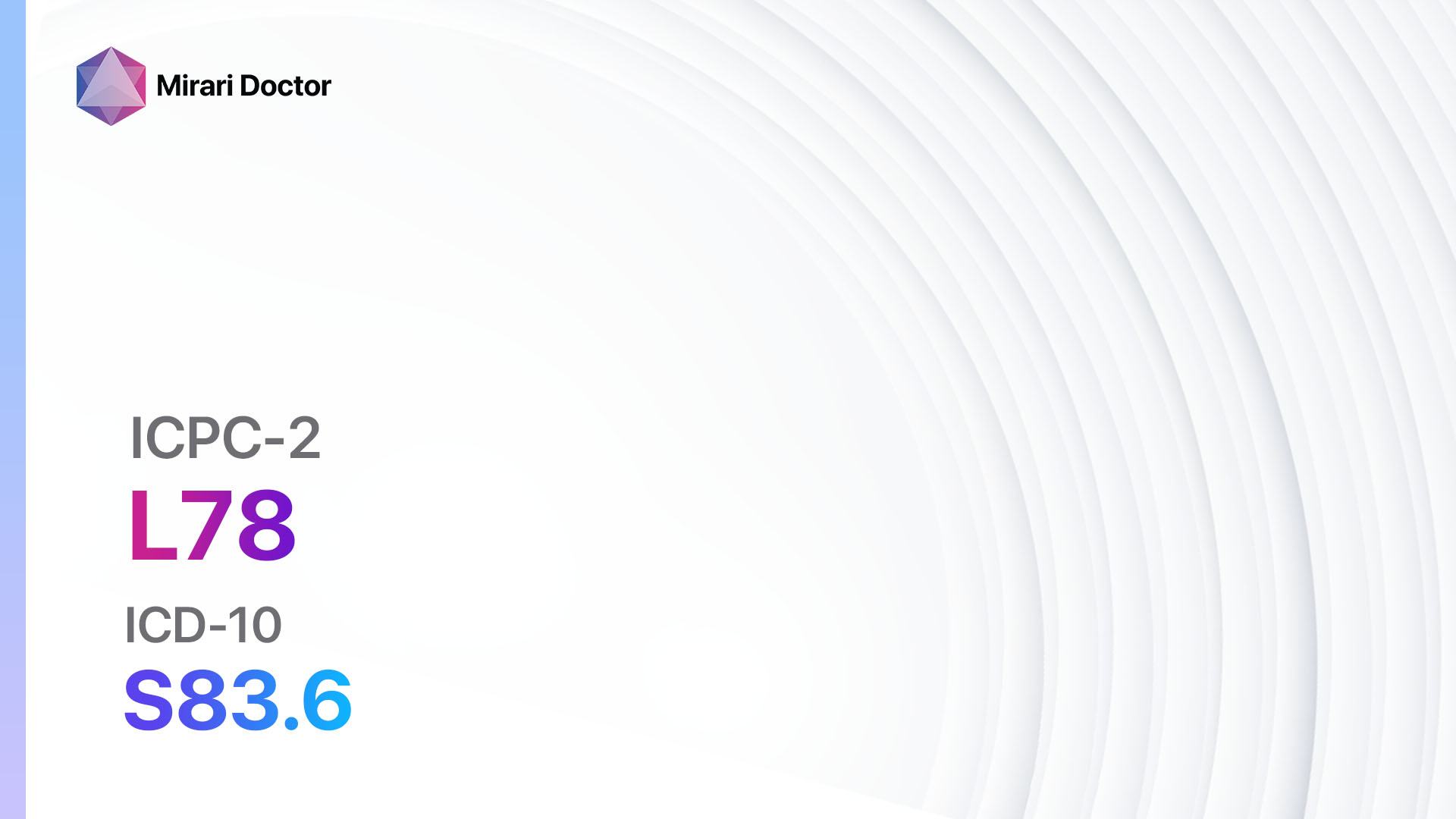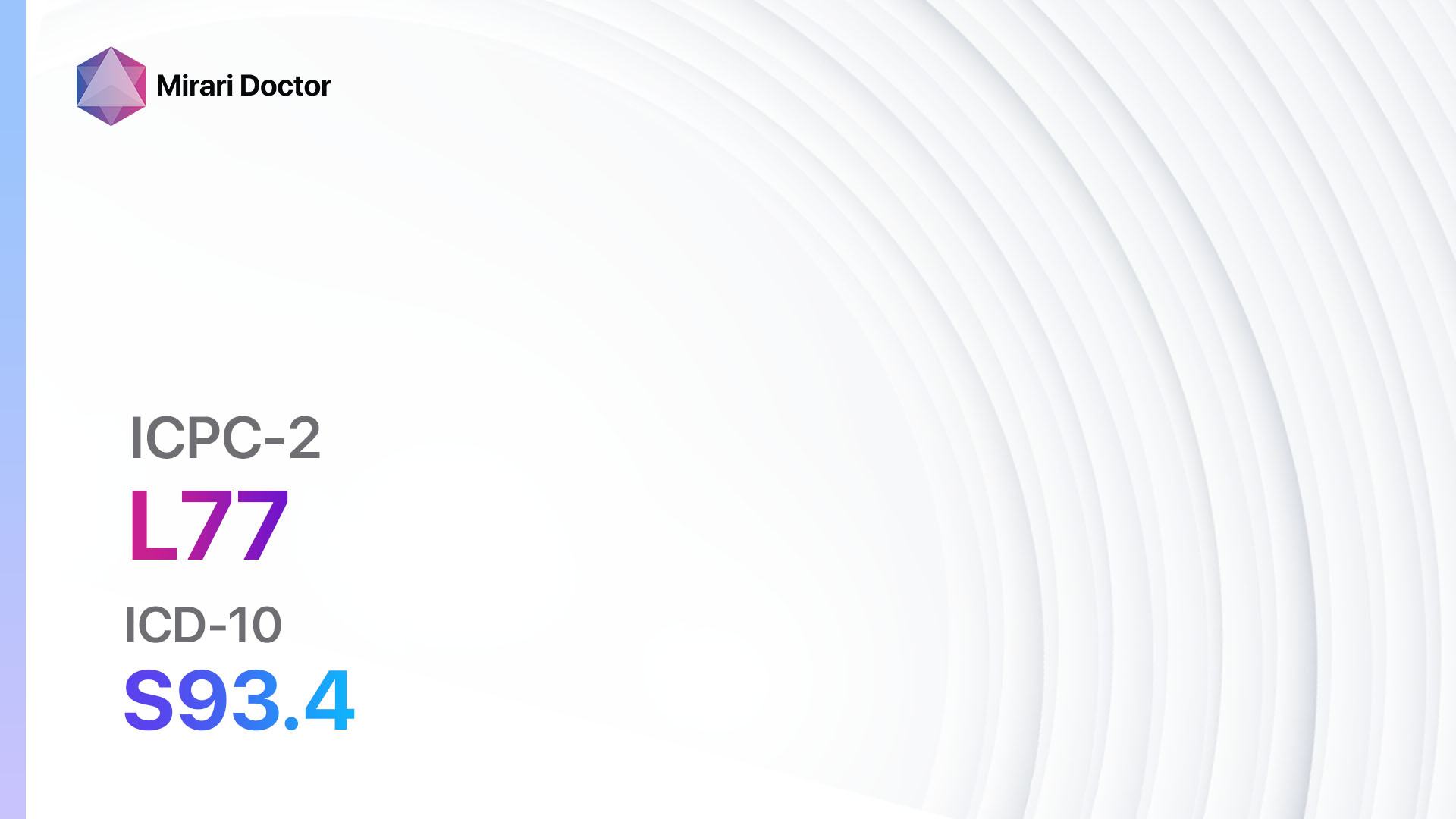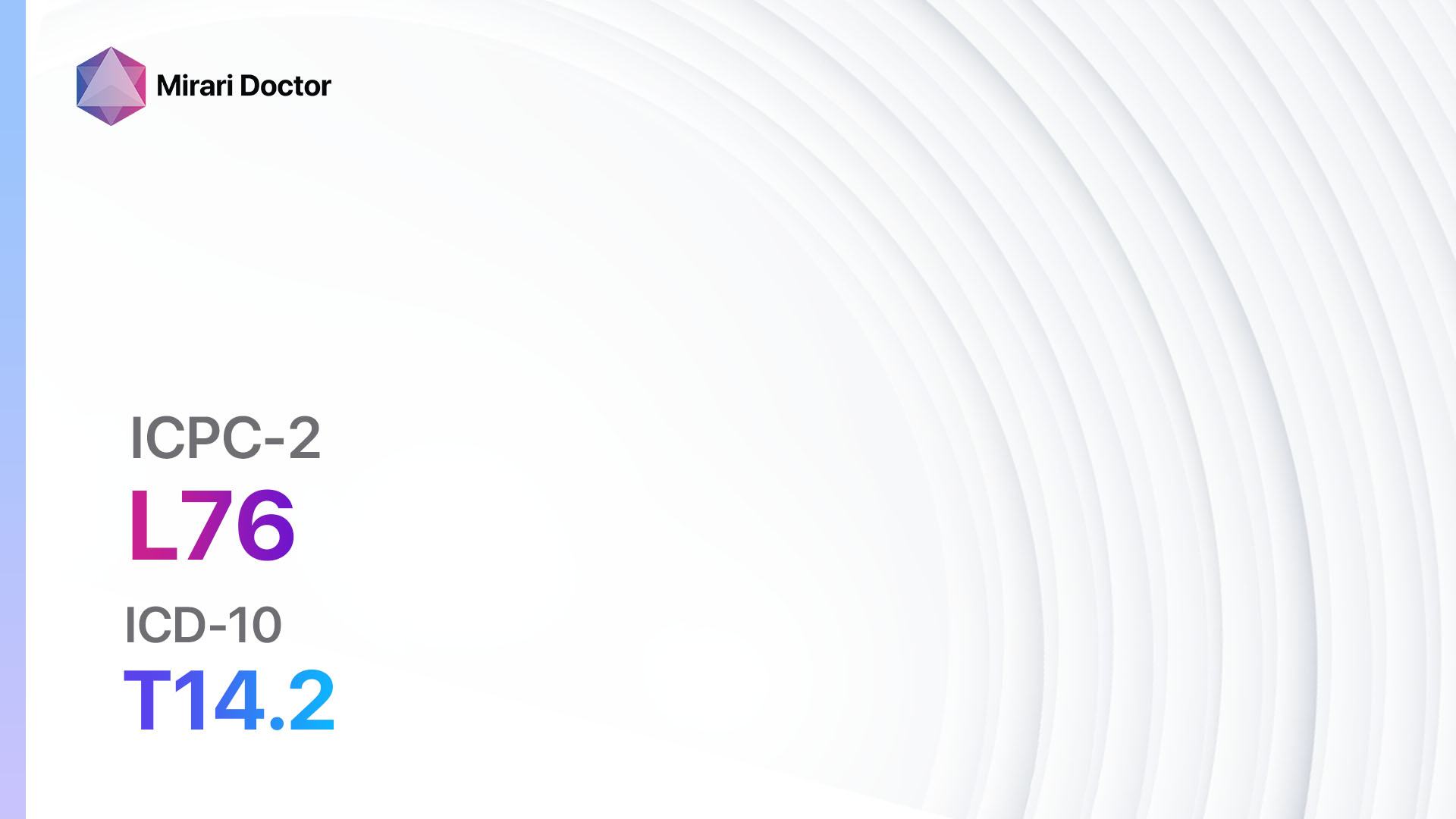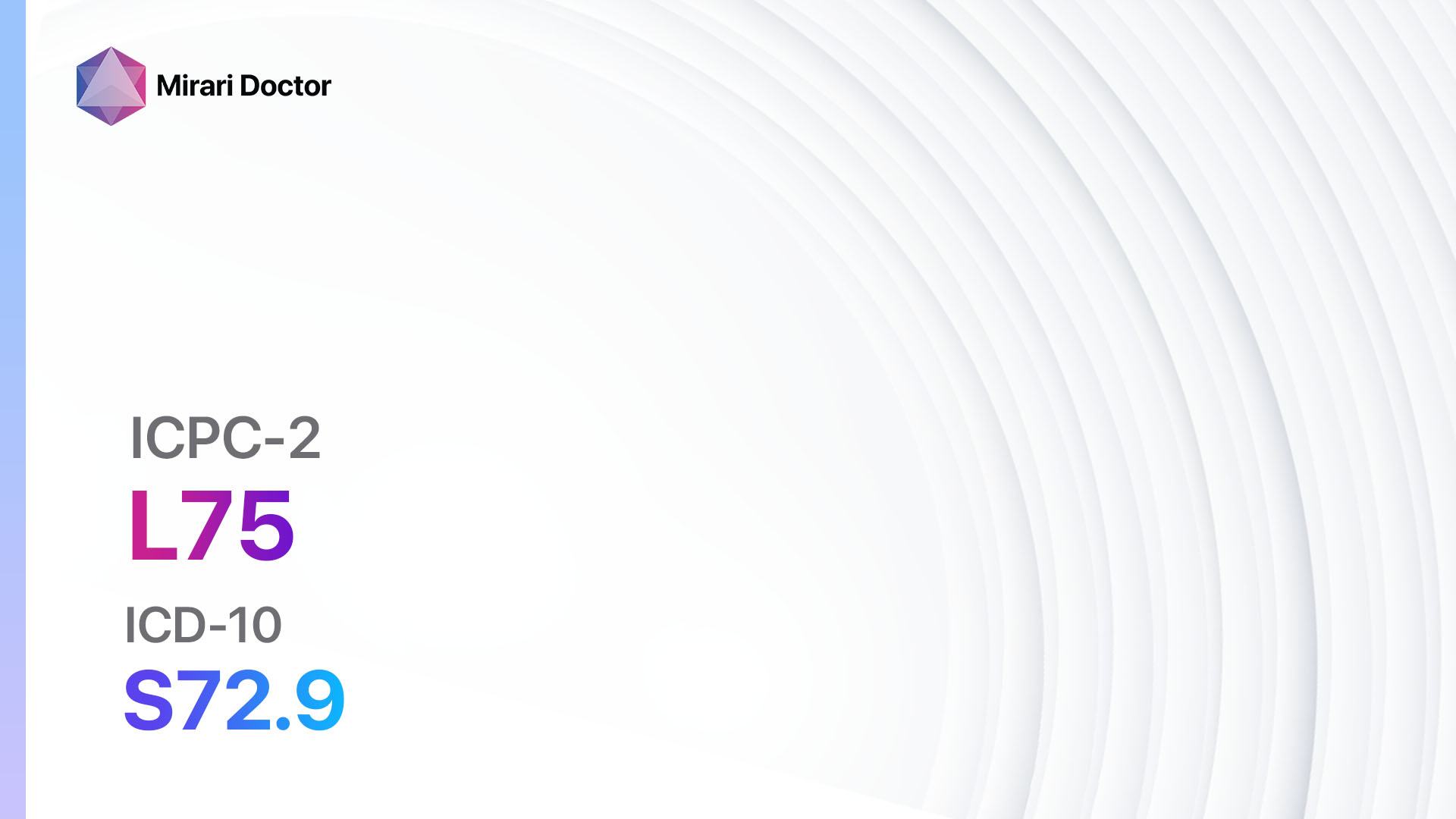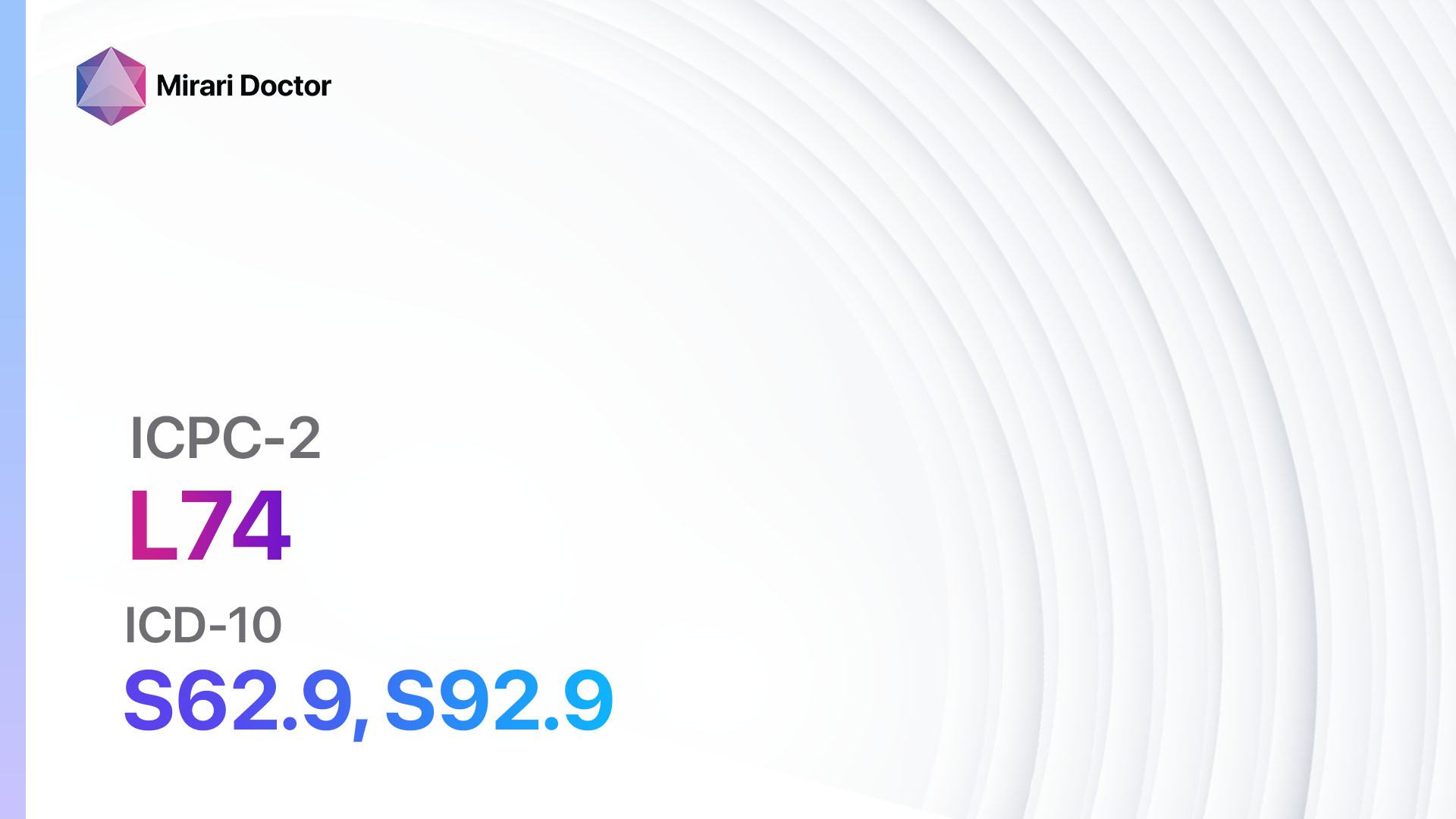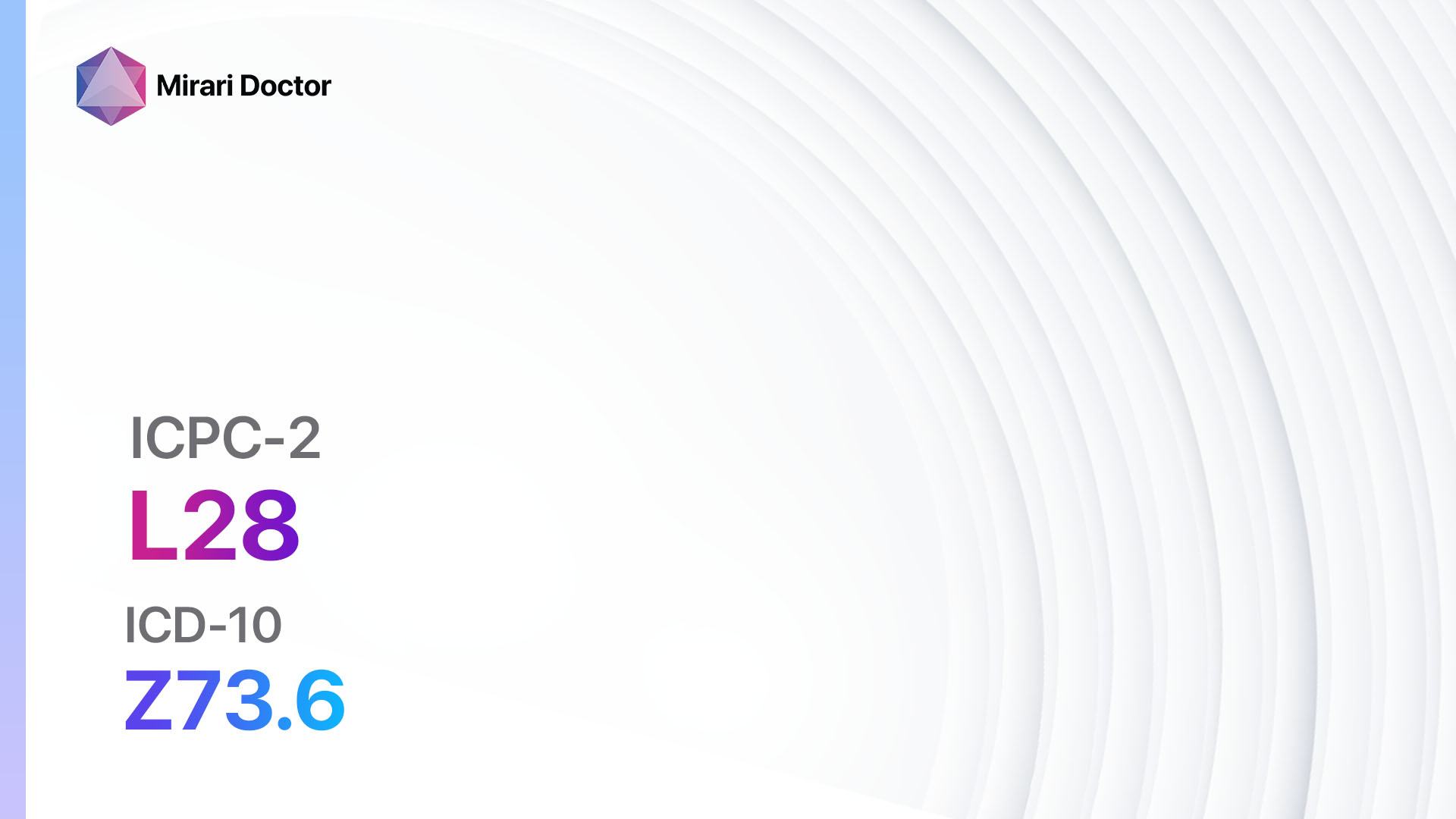
Introduction
Limited function/disability refers to a condition where an individual experiences difficulties in performing daily activities due to physical or cognitive impairments[1]. This guide aims to provide an overview of the symptoms, causes, diagnostic steps, possible interventions, and lifestyle modifications for managing limited function/disability.
Codes
- ICPC-2 Code: L28 Limited function/disability (l)[2]
- ICD-10 Code: Z73.6 Limitation of activities due to disability[3]
Symptoms
- Difficulty in walking or moving[4]
- Impaired coordination and balance[5]
- Muscle weakness or stiffness[6]
- Chronic pain or discomfort[7]
- Fatigue or lack of energy[8]
- Cognitive impairments, such as memory loss or difficulty concentrating[9]
Causes
- Neurological disorders, such as stroke, Parkinson’s disease, or multiple sclerosis[10]
- Musculoskeletal conditions, including arthritis or spinal cord injuries
- Chronic illnesses, such as fibromyalgia or chronic fatigue syndrome
- Genetic or congenital conditions, such as cerebral palsy or Down syndrome
- Mental health disorders, including depression or anxiety
Diagnostic Steps
Medical History
- Gather information about the patient’s medical conditions, including any chronic illnesses or neurological disorders.
- Identify any previous injuries or surgeries that may contribute to limited function/disability.
- Assess the patient’s cognitive function and mental health status.
- Inquire about the patient’s lifestyle habits, including exercise routine, diet, and sleep patterns.
Physical Examination
- Evaluate the patient’s range of motion, muscle strength, and coordination.
- Assess the patient’s gait and balance.
- Perform neurological tests to identify any abnormalities in reflexes or sensation.
- Examine the patient’s joints for signs of inflammation or deformities.
- Check for any signs of muscle atrophy or weakness.
Laboratory Tests
- Complete blood count (CBC) to assess for any underlying infections or anemia.
- Blood glucose levels to rule out diabetes as a potential cause of limited function/disability.
- Thyroid function tests to evaluate for any thyroid disorders that may contribute to symptoms.
- Inflammatory markers, such as C-reactive protein (CRP) or erythrocyte sedimentation rate (ESR), to identify any underlying inflammatory conditions.
- Genetic testing in cases where a genetic or congenital condition is suspected.
Diagnostic Imaging
- X-rays to assess for any fractures, joint abnormalities, or degenerative changes.
- Magnetic resonance imaging (MRI) to evaluate the brain, spinal cord, or musculoskeletal structures.
- Computed tomography (CT) scans to visualize bony structures or detect any abnormalities in the brain or spine.
- Ultrasound to assess blood flow or identify any vascular abnormalities.
- Electromyography (EMG) to evaluate nerve and muscle function.
Other Tests
- Neuropsychological testing to assess cognitive function and identify any cognitive impairments.
- Functional assessments, such as the Activities of Daily Living (ADL) scale, to determine the patient’s level of independence in performing daily activities.
- Occupational therapy or physical therapy evaluations to assess functional limitations and develop appropriate treatment plans.
Follow-up and Patient Education
- Schedule regular follow-up appointments to monitor the patient’s progress and adjust treatment plans as needed.
- Provide education on adaptive strategies and assistive devices that can improve independence and quality of life.
- Offer resources and support groups for patients and their families to cope with the challenges of limited function/disability.
Possible Interventions
Traditional Interventions
Medications:
Top 5 drugs for Limited function/disability:
- Nonsteroidal anti-inflammatory drugs (NSAIDs) (e.g., Ibuprofen, Naproxen):
- Cost: Generic versions can be $3-$20/month.
- Contraindications: History of gastrointestinal bleeding, kidney disease.
- Side effects: Upset stomach, increased risk of bleeding.
- Severe side effects: Kidney damage, allergic reactions.
- Drug interactions: Blood thinners, certain blood pressure medications.
- Warning: Prolonged use may increase the risk of cardiovascular events.
- Muscle relaxants (e.g., Cyclobenzaprine, Baclofen):
- Cost: Generic versions can be $10-$50/month.
- Contraindications: History of liver disease, certain respiratory conditions.
- Side effects: Drowsiness, dizziness, dry mouth.
- Severe side effects: Severe allergic reactions, liver toxicity.
- Drug interactions: Sedatives, alcohol.
- Warning: Avoid driving or operating heavy machinery while taking muscle relaxants.
- Antidepressants (e.g., Amitriptyline, Duloxetine):
- Cost: Generic versions can be $10-$50/month.
- Contraindications: History of seizures, recent heart attack.
- Side effects: Dry mouth, drowsiness, weight gain.
- Severe side effects: Suicidal thoughts, serotonin syndrome.
- Drug interactions: Monoamine oxidase inhibitors (MAOIs), certain pain medications.
- Warning: Regular monitoring for changes in mood or behavior is necessary.
- Anticonvulsants (e.g., Gabapentin, Pregabalin):
- Cost: Generic versions can be $10-$50/month.
- Contraindications: History of kidney disease, hypersensitivity.
- Side effects: Dizziness, drowsiness, weight gain.
- Severe side effects: Suicidal thoughts, severe allergic reactions.
- Drug interactions: Opioids, certain antidepressants.
- Warning: Abrupt discontinuation may lead to withdrawal symptoms.
- Corticosteroids (e.g., Prednisone, Dexamethasone):
- Cost: Generic versions can be $10-$50/month.
- Contraindications: Active infections, uncontrolled diabetes.
- Side effects: Increased appetite, weight gain, mood changes.
- Severe side effects: Increased risk of infections, osteoporosis.
- Drug interactions: Nonsteroidal anti-inflammatory drugs (NSAIDs), certain anticoagulants.
- Warning: Long-term use may require gradual tapering to avoid adrenal insufficiency.
Alternative Drugs:
- Antispasmodics (e.g., Hyoscyamine): Used to relieve muscle spasms and cramps. Cost: Generic versions can be $10-$50/month.
- Nerve pain medications (e.g., Gabapentin, Pregabalin): Effective in managing neuropathic pain. Cost: Generic versions can be $10-$50/month.
- Benzodiazepines (e.g., Diazepam, Clonazepam): Used for short-term relief of muscle spasms or anxiety. Cost: Generic versions can be $10-$50/month.
- Selective serotonin reuptake inhibitors (SSRIs) (e.g., Sertraline, Escitalopram): May help manage associated depression or anxiety. Cost: Generic versions can be $10-$50/month.
- Antipsychotics (e.g., Quetiapine, Risperidone): Used for managing associated psychiatric symptoms. Cost: Generic versions can be $10-$50/month.
Surgical Procedures:
- Joint replacement surgery: Replaces damaged joints with artificial implants. Cost: $20,000 to $50,000 per joint.
- Spinal fusion surgery: Joins two or more vertebrae to stabilize the spine. Cost: $50,000 to $100,000.
- Deep brain stimulation: Involves implanting electrodes in the brain to manage movement disorders. Cost: $50,000 to $100,000.
- Nerve decompression surgery: Relieves pressure on compressed nerves. Cost: $10,000 to $30,000.
- Tendon or ligament repair: Restores function and stability to damaged tendons or ligaments. Cost: $5,000 to $20,000.
Alternative Interventions
- Acupuncture: May help alleviate pain and improve overall well-being. Cost: $60-$120 per session.
- Chiropractic care: Manipulation of the spine to improve joint function and reduce pain. Cost: $50-$200 per session.
- Massage therapy: Helps relax muscles, improve circulation, and reduce pain. Cost: $50-$100 per session.
- Yoga or tai chi: Gentle exercises that improve flexibility, strength, and balance. Cost: Varies depending on the location and instructor.
- Assistive devices: Can include mobility aids, such as canes or walkers, to improve independence. Cost: Varies depending on the specific device.
Lifestyle Interventions
- Regular exercise: Engaging in low-impact activities, such as swimming or cycling, can improve strength and mobility. Cost: Varies depending on the chosen activity (e.g., gym membership, equipment costs).
- Physical therapy: Customized exercise programs and techniques to improve function and reduce pain. Cost: $50-$200 per session.
- Occupational therapy: Focuses on improving daily activities and developing adaptive strategies. Cost: $50-$200 per session.
- Healthy diet: Emphasize a balanced diet rich in fruits, vegetables, lean proteins, and whole grains. Cost: Varies depending on food choices and dietary restrictions.
- Stress management techniques: Practices such as meditation, deep breathing exercises, or mindfulness can help reduce stress and improve overall well-being. Cost: Varies depending on the chosen method (e.g., self-guided vs. guided sessions).
It is important to note that the cost ranges provided are approximate and may vary depending on the location and availability of the interventions.
Mirari Cold Plasma Alternative Intervention
Understanding Mirari Cold Plasma
- Safe and Non-Invasive Treatment: Mirari Cold Plasma is a safe and non-invasive treatment option for various skin conditions. It does not require incisions, minimizing the risk of scarring, bleeding, or tissue damage.
- Efficient Extraction of Foreign Bodies: Mirari Cold Plasma facilitates the removal of foreign bodies from the skin by degrading and dissociating organic matter, allowing easier access and extraction.
- Pain Reduction and Comfort: Mirari Cold Plasma has a local analgesic effect, providing pain relief during the treatment, making it more comfortable for the patient.
- Reduced Risk of Infection: Mirari Cold Plasma has antimicrobial properties, effectively killing bacteria and reducing the risk of infection.
- Accelerated Healing and Minimal Scarring: Mirari Cold Plasma stimulates wound healing and tissue regeneration, reducing healing time and minimizing the formation of scars.
Mirari Cold Plasma Prescription
Video instructions for using Mirari Cold Plasma Device – L28 Limited function/disability (l) (ICD-10:Z73.6)
| Mild | Moderate | Severe |
| Mode setting: 7 (Immunotherapy) Location: 1 (Sacrum) Morning: 15 minutes, Evening: 15 minutes |
Mode setting: 7 (Immunotherapy) Location: 1 (Sacrum) Morning: 30 minutes, Lunch: 30 minutes, Evening: 30 minutes |
Mode setting: 7 (Immunotherapy) Location: 1 (Sacrum) Morning: 30 minutes, Lunch: 30 minutes, Evening: 30 minutes |
| Mode setting: 7 (Immunotherapy) Location: 4 (Heart, Bile & Pancreas) Morning: 15 minutes, Evening: 15 minutes |
Mode setting: 7 (Immunotherapy) Location: 4 (Heart, Bile & Pancreas) Morning: 30 minutes, Lunch: 30 minutes, Evening: 30 minutes |
Mode setting: 7 (Immunotherapy) Location: 4 (Heart, Bile & Pancreas) Morning: 30 minutes, Lunch: 30 minutes, Evening: 30 minutes |
| Mode setting: 7 (Immunotherapy) Location: 1 (Sacrum) Morning: 15 minutes, Evening: 15 minutes |
Mode setting: 7 (Immunotherapy) Location: 1 (Sacrum) Morning: 30 minutes, Lunch: 30 minutes, Evening: 30 minutes |
Mode setting: 7 (Immunotherapy) Location: 1 (Sacrum) Morning: 30 minutes, Lunch: 30 minutes, Evening: 30 minutes |
| Mode setting: 7 (Immunotherapy) Location: 7 (Neuro system & ENT) Morning: 15 minutes, Evening: 15 minutes |
Mode setting: 7 (Immunotherapy) Location: 7 (Neuro system & ENT) Morning: 30 minutes, Lunch: 30 minutes, Evening: 30 minutes |
Mode setting: 7 (Immunotherapy) Location: 7 (Neuro system & ENT) Morning: 30 minutes, Lunch: 30 minutes, Evening: 30 minutes |
| Total Morning: 60 minutes approx. $10 USD, Evening: 60 minutes approx. $10 USD |
Total Morning: 120 minutes approx. $20 USD, Lunch: 120 minutes approx. $20 USD, Evening: 120 minutes approx. $20 USD, |
Total Morning: 120 minutes approx. $20 USD, Lunch: 120 minutes approx. $20 USD, Evening: 120 minutes approx. $20 USD, |
| Usual treatment for 7-60 days approx. $140 USD – $1200 USD | Usual treatment for 6-8 weeks approx. $2,520 USD – $3,360 USD |
Usual treatment for 3-6 months approx. $5,400 USD – $10,800 USD
|
 |
|
Use the Mirari Cold Plasma device to treat Limited function/disability (l) effectively.
WARNING: MIRARI COLD PLASMA IS DESIGNED FOR THE HUMAN BODY WITHOUT ANY ARTIFICIAL OR THIRD PARTY PRODUCTS. USE OF OTHER PRODUCTS IN COMBINATION WITH MIRARI COLD PLASMA MAY CAUSE UNPREDICTABLE EFFECTS, HARM OR INJURY. PLEASE CONSULT A MEDICAL PROFESSIONAL BEFORE COMBINING ANY OTHER PRODUCTS WITH USE OF MIRARI.
Step 1: Cleanse the Skin
- Start by cleaning the affected area of the skin with a gentle cleanser or mild soap and water. Gently pat the area dry with a clean towel.
Step 2: Prepare the Mirari Cold Plasma device
- Ensure that the Mirari Cold Plasma device is fully charged or has fresh batteries as per the manufacturer’s instructions. Make sure the device is clean and in good working condition.
- Switch on the Mirari device using the power button or by following the specific instructions provided with the device.
- Some Mirari devices may have adjustable settings for intensity or treatment duration. Follow the manufacturer’s instructions to select the appropriate settings based on your needs and the recommended guidelines.
Step 3: Apply the Device
- Place the Mirari device in direct contact with the affected area of the skin. Gently glide or hold the device over the skin surface, ensuring even coverage of the area experiencing.
- Slowly move the Mirari device in a circular motion or follow a specific pattern as indicated in the user manual. This helps ensure thorough treatment coverage.
Step 4: Monitor and Assess:
- Keep track of your progress and evaluate the effectiveness of the Mirari device in managing your Limited function/disability (l). If you have any concerns or notice any adverse reactions, consult with your health care professional.
Note
This guide is for informational purposes only and should not replace the advice of a medical professional. Always consult with your healthcare provider or a qualified medical professional for personal advice, diagnosis, or treatment. Do not solely rely on the information presented here for decisions about your health. Use of this information is at your own risk. The authors of this guide, nor any associated entities or platforms, are not responsible for any potential adverse effects or outcomes based on the content.
Mirari Cold Plasma System Disclaimer
- Purpose: The Mirari Cold Plasma System is a Class 2 medical device designed for use by trained healthcare professionals. It is registered for use in Thailand and Vietnam. It is not intended for use outside of these locations.
- Informational Use: The content and information provided with the device are for educational and informational purposes only. They are not a substitute for professional medical advice or care.
- Variable Outcomes: While the device is approved for specific uses, individual outcomes can differ. We do not assert or guarantee specific medical outcomes.
- Consultation: Prior to utilizing the device or making decisions based on its content, it is essential to consult with a Certified Mirari Tele-Therapist and your medical healthcare provider regarding specific protocols.
- Liability: By using this device, users are acknowledging and accepting all potential risks. Neither the manufacturer nor the distributor will be held accountable for any adverse reactions, injuries, or damages stemming from its use.
- Geographical Availability: This device has received approval for designated purposes by the Thai and Vietnam FDA. As of now, outside of Thailand and Vietnam, the Mirari Cold Plasma System is not available for purchase or use.
References
-
- Intellectual Disability. (n.d.). Special Olympics. Retrieved June 22, 2024, from https://www.specialolympics.org/about/intellectual-disabilities/what-is-intellectual-disability
- ICPC-2 – English. (n.d.). ICPC-2. Retrieved June 22, 2024, from https://www.icpc-2.info/icpc-2-english/
- 2024 ICD-10-CM Diagnosis Code Z73.6. (n.d.). ICD10Data.Com. Retrieved June 22, 2024, from https://www.icd10data.com/ICD10CM/Codes/Z00-Z99/Z69-Z76/Z73-/Z73.6
- Symptoms of Intellectual Disability. (n.d.). WebMD. Retrieved June 22, 2024, from https://www.webmd.com/parenting/baby/child-intellectual-disability#1
- Intellectual Disability Signs, Symptoms, & Causes. (n.d.). Millcreek Behavioral Health. Retrieved June 22, 2024, from https://www.millcreekbehavioralhealth.com/development-disorders/intellectual-disability/symptoms-signs-causes/
- Intellectual disability. (n.d.). MSD Manual Consumer Version. Retrieved June 22, 2024, from https://www.msdmanuals.com/home/children-s-health-issues/learning-and-developmental-disorders/intellectual-disability
- Intellectual disability: Definition, symptoms, treatment, and more. (n.d.). Medical News Today. Retrieved June 22, 2024, from https://www.medicalnewstoday.com/articles/intellectual-disability
- Intellectual Disability Signs, Symptoms, & Causes. (n.d.). Millcreek Behavioral Health. Retrieved June 22, 2024, from https://www.millcreekbehavioralhealth.com/development-disorders/intellectual-disability/symptoms-signs-causes/
- Main Types of Disabilities and their Causes. (n.d.). EnableMe Kenya. Retrieved June 22, 2024, from https://www.enableme.ke/en/article/main-types-of-disabilities-and-their-causes-1528
- 6 common causes of disability. (2023, April 6). Beedem Law. Retrieved June 22, 2024, from https://www.beedemlaw.com/blog/2023/04/6-common-causes-of-disability/
Related articles
Made in USA



